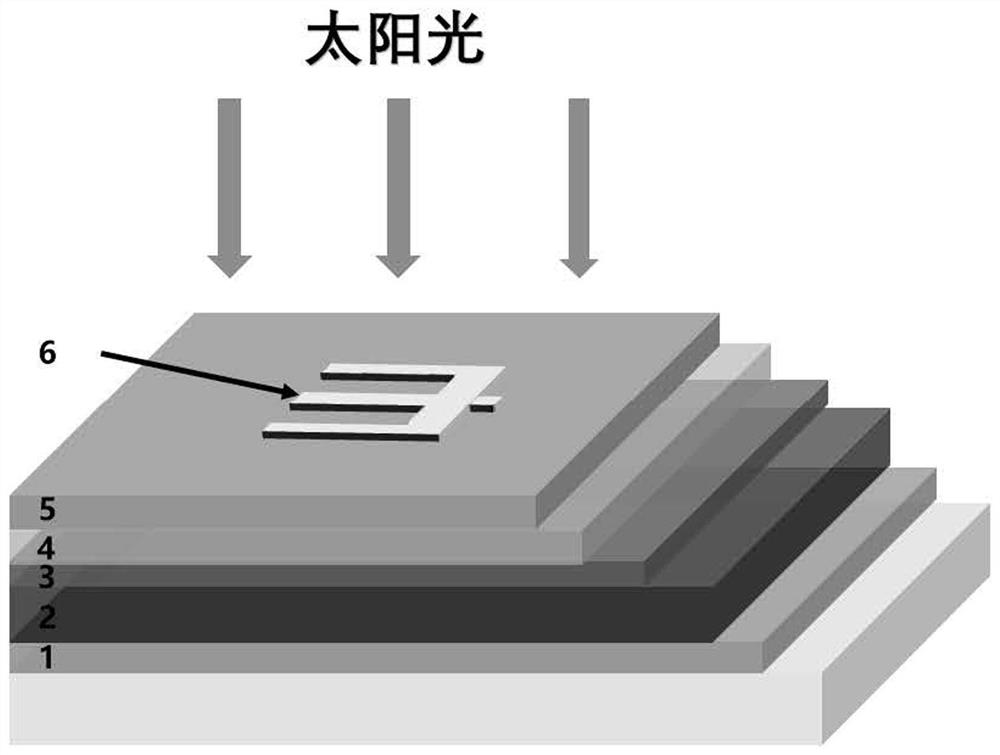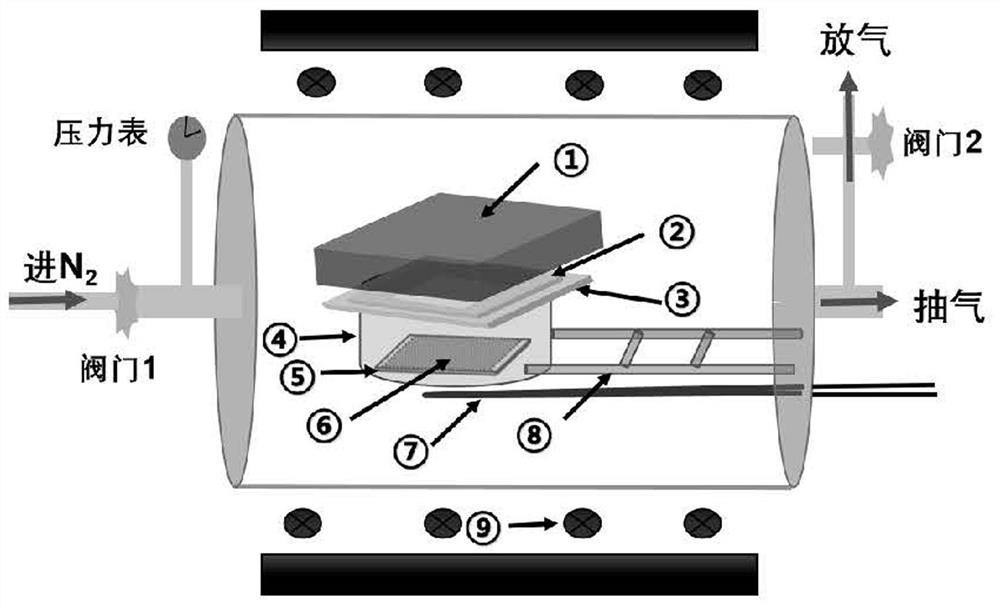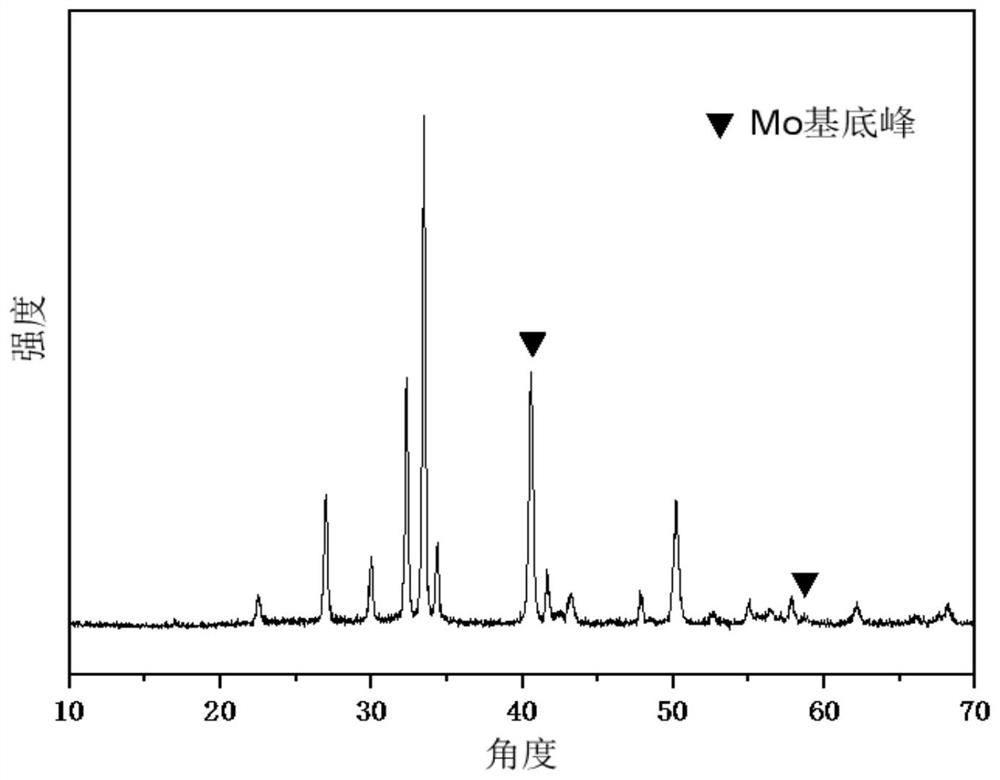Germanium sulfide polycrystalline thin film and solar cell comprising same
A technology of solar cells and germanium sulfide, applied in circuits, electrical components, photovoltaic power generation, etc., can solve problems such as difficult preparation, achieve stable performance, easy sublimation, and large application prospects
- Summary
- Abstract
- Description
- Claims
- Application Information
AI Technical Summary
Problems solved by technology
Method used
Image
Examples
Embodiment 1
[0051] A high-quality preparation method of a thin-film solar cell with germanous sulfide polycrystalline thin film as an absorbing layer, the specific steps include: surface selenization of molybdenum base, p-type layer deposition step, n-type layer deposition step, window layer deposition steps and electrode layer deposition steps.
[0052] a) Surface selenization steps of molybdenum substrate: three steps of surface cleaning of blank substrate, magnetron sputtering double-layer Mo substrate and high temperature selenization
[0053] The blank substrate is selected as soda-lime glass, and its surface cleaning process is as follows: use deionized water, acetone, and isopropanol to ultrasonically clean for 40 minutes, then blow it with high-purity nitrogen along a fixed direction, and finally use ultraviolet- Ozone cleaning for 20min.
[0054] A two-step sputtering process was used to prepare the Mo base layer. First, it was sputtered with high pressure (7mTorr) and low power...
Embodiment 2
[0063] A preparation method of a high-quality germanous sulfide polycrystalline thin film solar cell, the specific preparation method is basically the same as that in Example 1, the difference is that:
[0064] In step b), the deposition program of the rapid annealing furnace is: C1:20, T1:15, C2:370, T2:120, C3:370, T3:600, C4:370, T4:6, C5:480, T5: 15, C6: 480, T6: 420, C7: 480, T7: -121 (the unit of C is ℃, the unit of T is second, T=-121 represents the end of the program, that is, the rapid annealing furnace passes through the room temperature Rapidly heat up to 370°C in 15s, keep at this temperature for 120s, and then quickly pass through about 500Torr of N 2 , keep warm for 7 minutes, then turn on the vacuum pump, and after 3 minutes, the pressure in the deposition chamber can be pumped down to below 15mTorr, and then the temperature can be quickly raised to 480°C in 6s, kept for 15 seconds, and finally N 2 , in-situ annealing at 480° C. for 7 minutes), the polycrystallin...
Embodiment 3
[0067] A preparation method of a high-quality germanous sulfide polycrystalline thin film solar cell, the specific preparation method is basically the same as that in Example 1, the difference is that:
[0068] In step b), the deposition program of the rapid annealing furnace is: C1:20, T1:30, C2:410, T2:120, C3:410, T3:600, C4:410, T4:4, C5:480, T5: 15, C6: 480, T6: 420, C7: 480, T7: -121 (the unit of C is ℃, the unit of T is second, T=-121 represents the end of the program, that is, the rapid annealing furnace passes through the room temperature Rapidly heat up to 410°C in 30s, keep at this temperature for 120s, and then quickly pass in about 500Torr of N 2 , keep warm for 7 minutes, then turn on the vacuum pump, and after 3 minutes, the pressure in the deposition chamber can be pumped down to below 15mTorr, and then the temperature can be quickly raised to 480°C in 4s, kept for 15 seconds, and finally N 2 , in-situ annealing at 480° C. for 7 minutes), the polycrystalline g...
PUM
| Property | Measurement | Unit |
|---|---|---|
| thickness | aaaaa | aaaaa |
| absorption coefficient | aaaaa | aaaaa |
| thickness | aaaaa | aaaaa |
Abstract
Description
Claims
Application Information
 Login to View More
Login to View More - R&D
- Intellectual Property
- Life Sciences
- Materials
- Tech Scout
- Unparalleled Data Quality
- Higher Quality Content
- 60% Fewer Hallucinations
Browse by: Latest US Patents, China's latest patents, Technical Efficacy Thesaurus, Application Domain, Technology Topic, Popular Technical Reports.
© 2025 PatSnap. All rights reserved.Legal|Privacy policy|Modern Slavery Act Transparency Statement|Sitemap|About US| Contact US: help@patsnap.com



